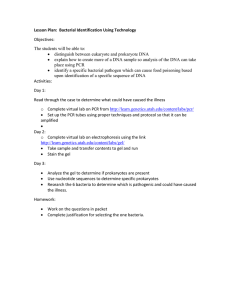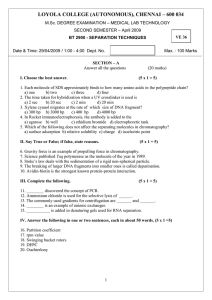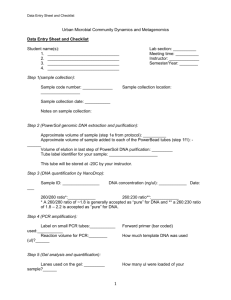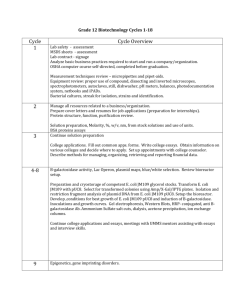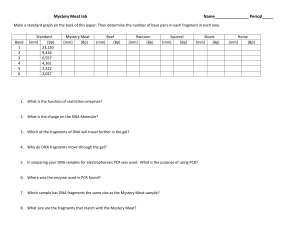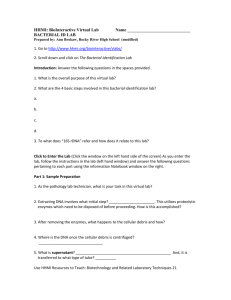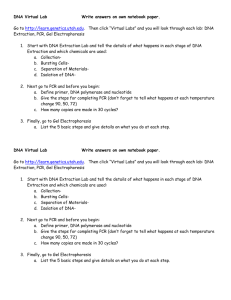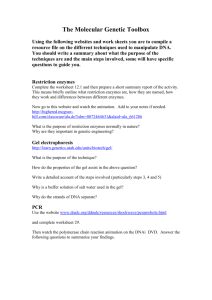GRADE 11 BIOTECHNOLOGY CURRICULUM
advertisement
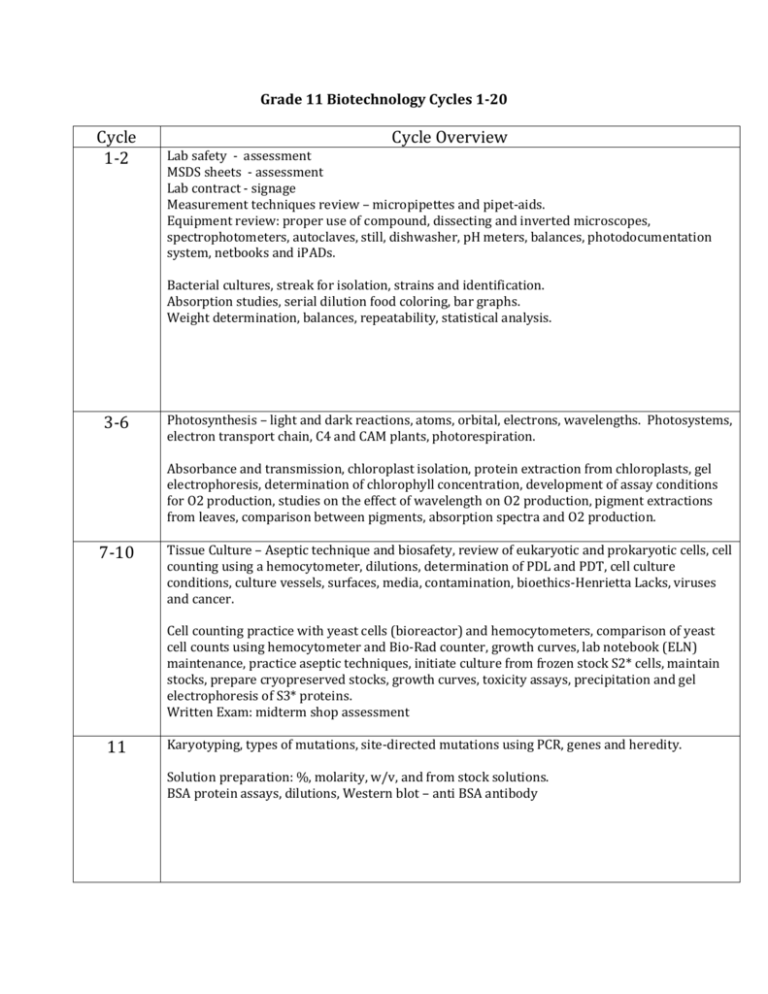
Grade 11 Biotechnology Cycles 1-20 Cycle 1-2 Cycle Overview Lab safety - assessment MSDS sheets - assessment Lab contract - signage Measurement techniques review – micropipettes and pipet-aids. Equipment review: proper use of compound, dissecting and inverted microscopes, spectrophotometers, autoclaves, still, dishwasher, pH meters, balances, photodocumentation system, netbooks and iPADs. Bacterial cultures, streak for isolation, strains and identification. Absorption studies, serial dilution food coloring, bar graphs. Weight determination, balances, repeatability, statistical analysis. 3-6 Photosynthesis – light and dark reactions, atoms, orbital, electrons, wavelengths. Photosystems, electron transport chain, C4 and CAM plants, photorespiration. Absorbance and transmission, chloroplast isolation, protein extraction from chloroplasts, gel electrophoresis, determination of chlorophyll concentration, development of assay conditions for O2 production, studies on the effect of wavelength on O2 production, pigment extractions from leaves, comparison between pigments, absorption spectra and O2 production. 7-10 Tissue Culture – Aseptic technique and biosafety, review of eukaryotic and prokaryotic cells, cell counting using a hemocytometer, dilutions, determination of PDL and PDT, cell culture conditions, culture vessels, surfaces, media, contamination, bioethics-Henrietta Lacks, viruses and cancer. Cell counting practice with yeast cells (bioreactor) and hemocytometers, comparison of yeast cell counts using hemocytometer and Bio-Rad counter, growth curves, lab notebook (ELN) maintenance, practice aseptic techniques, initiate culture from frozen stock S2* cells, maintain stocks, prepare cryopreserved stocks, growth curves, toxicity assays, precipitation and gel electrophoresis of S3* proteins. Written Exam: midterm shop assessment 11 Karyotyping, types of mutations, site-directed mutations using PCR, genes and heredity. Solution preparation: %, molarity, w/v, and from stock solutions. BSA protein assays, dilutions, Western blot – anti BSA antibody 12-14 Regulation of eukaryotic gene expression, bioinformatics, Epigenetics, Product Development, upstream and downstream processing The lifecycle of pharmaceutical products Preparation of competent cells, Transformation E.coli. JM109 with pAmy (encodes amylase) isolation of transformed bacteria, DNA preparation, restriction analysis. Growth curve comparison between bacteria with and without pAmy, bioreactor use, PAGE, Western blot for amylase production, anti-amylase antibody, development of a purification protocol for amylase, Ammonium Sulfate cuts, dialysis, ion exchange chromatography, Hydrophobic Interaction chromatography (HIC) PAGE, Western blots 15-16 Animal regulations and oversight, The biotechnology workforce and history of biotechnology Lagomorph species identification using DNA isolation and analysis: DNA isolation, use of mitochondrial DNA for species identification, gel analysis of DNA fragment polymorphisms, PCR, optimal enzyme conditions documentation 17 Product Quality – regulatory oversight Review PCR and primer design Identification of bacteria using PCR 18 Product Quality – regulatory oversight (cont.) Blood and Blood Typing 19 Product Quality - Documentation Bioreactors – growth conditions for S3 cells. Develop SOP 20 Written exam: final Shop assessment. Make-up missing labs from field trips, snow days, etc. Competency Assessments: lab safety, lab techniques, measurements, lab equipment, documentation, pH meter, agarose gel preparation, solution prep, microbiology techniques, protein purification techniques. Lab inventory and ordering Lab clean up

